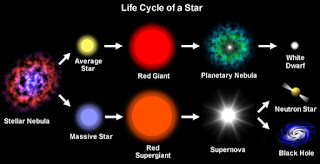PLANET MARS
Mars is the fourth planet from the Sun in the Solar System and it is the second smallest planet in the Solar System, being larger than only Mercury. Mars is named after the Roman God of War and is called "Red Planet" because of the iron oxide present on the surface of Mars which gives it a reddish appearance and make it distinctive among other space objects visible to naked eyes. Mars is a terrestrial planet with a thin atmosphere, with surface features reminiscent of the impact craters of the Moon and the valleys, deserts and polar ice caps of Earth.
Mariner 4 was the first Spacecraft to visit Mars and was launched by NASA on 28 November 1964, it made its closest approach to the planet on 15 July 1965. The days and seasons are comparable to those of Earth, because the rotational period as well as the tilt of the rotational axis relative to the ecliptic plane are similar. The Olympus Mons is the largest known Volcano and mountain in the Solar System located on Mars. Mars has 2 moons, Phobos and Deimos, which are small and irregularly shaped.
Physical Characteristics
Mars is only half of the diameter of Earth. It is less denser than Earth and has only 15% of Earth's volume and 11% of Earth's mass, resulting in about 38% of Earth's gravity. The surface area of Mars is slightly less than the Earth's total land area. The red orange appearance of Mars is because of iron oxide (ferric oxide) commonly known as hematite or rust. It sometimes looks like butterscotch, other common surface colours like brown, golden and green which depends upon the mineral content.
Mars is a terrestrial planet which consists of silicon and oxygen containing minerals, iron and other elements which is generally formed by surface rocks. Besides these Magnesium, aluminium, calcium and potassium are the other abundant elements on Mars' crust. The average thickness of the planet's crust is 50km (31mi) and the maximum thickness is 125km (78mi). Earth's crust averages 40km (25 mi). We can easily see Mars with the naked eye, as can its reddish colouring.
Magnetic Field
Although Mars has no evidence of a structured global Magnetic Field, observations show that parts of the planets crust have been magnetized, suggesting that alternating polarity reversal of its dipole field have occurred in the past.
Organic Compounds On Mars!
Recently, after the testing of the samples brought from the Red Planet (Mars), NASA said that there are some possibilities of organic salt present on Mars. After this research of NASA our understanding of Mars's surface will improve. Also this will help in finding life forms in Mars as well as on different Planets. In an interview NASA said that organic compound and salt traces on Mars could be a mark of geographical processes or bacterias, like that of found by the Curiosity Rover.
Hydrology
Liquid water, necessary for life as we know it, cannot exist on the surface of Mars. Water on Mars exists almost exclusively as water ice, located in the Martian polar ice caps and under the shallow Martian surface even at more temperate latitudes. A small amount of water vapour is present in the atmosphere.
There are no bodies of liquid water on the martian surface because its atmospheric pressure at the surface averages 600 pascals (0.087psi) —about 0.6% of Earth's mean sea level pressure — and because the temperature is far too low, (210K or –63°C) leading to immediate freezing. Despite this, about 3.8 billion years ago, there was a denser atmosphere, higher temperature, and vast amounts of liquid water flowed on the surface including large oceans.
Some important figures related to Mars are given below:
1. Surface temperature: 130 K to 308 K (–143°C to 35°C)
2. Distance from Sun: 249.27 million km ( 93 million miles)
3. Diameter: 6778 km (4211 miles)
4. Gravity: 3.7m/s²
5. Solar day: 24 hrs 40 mins
6. Solar year: 687 Earth days
8. Satellites: Phobos and Deimos
9. Surface Area: 144,798,500 km² (55,907,000 mi²)
10. Volume: 1.63*10¹¹ km³
11. Mass: 6.41*10²³ kg
12. Density: 3.9335g/cm³









Comments
Post a Comment